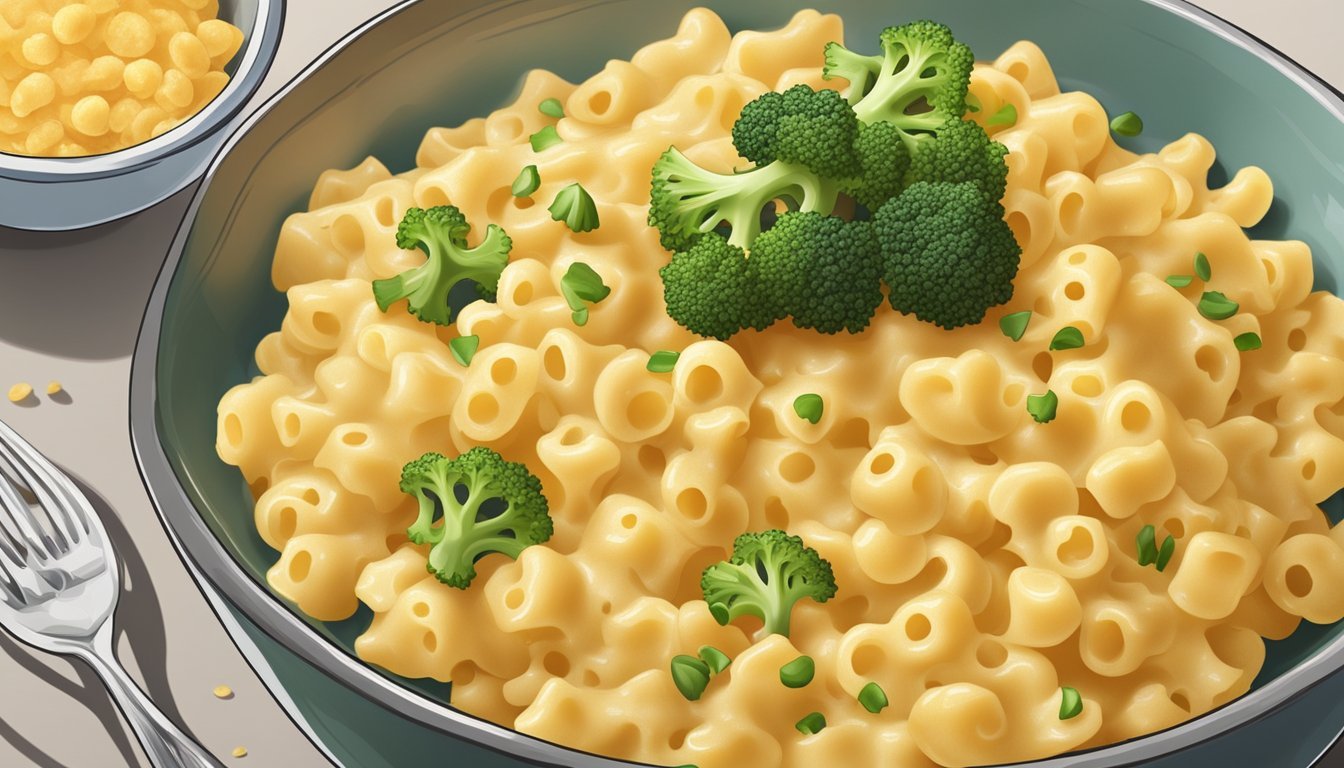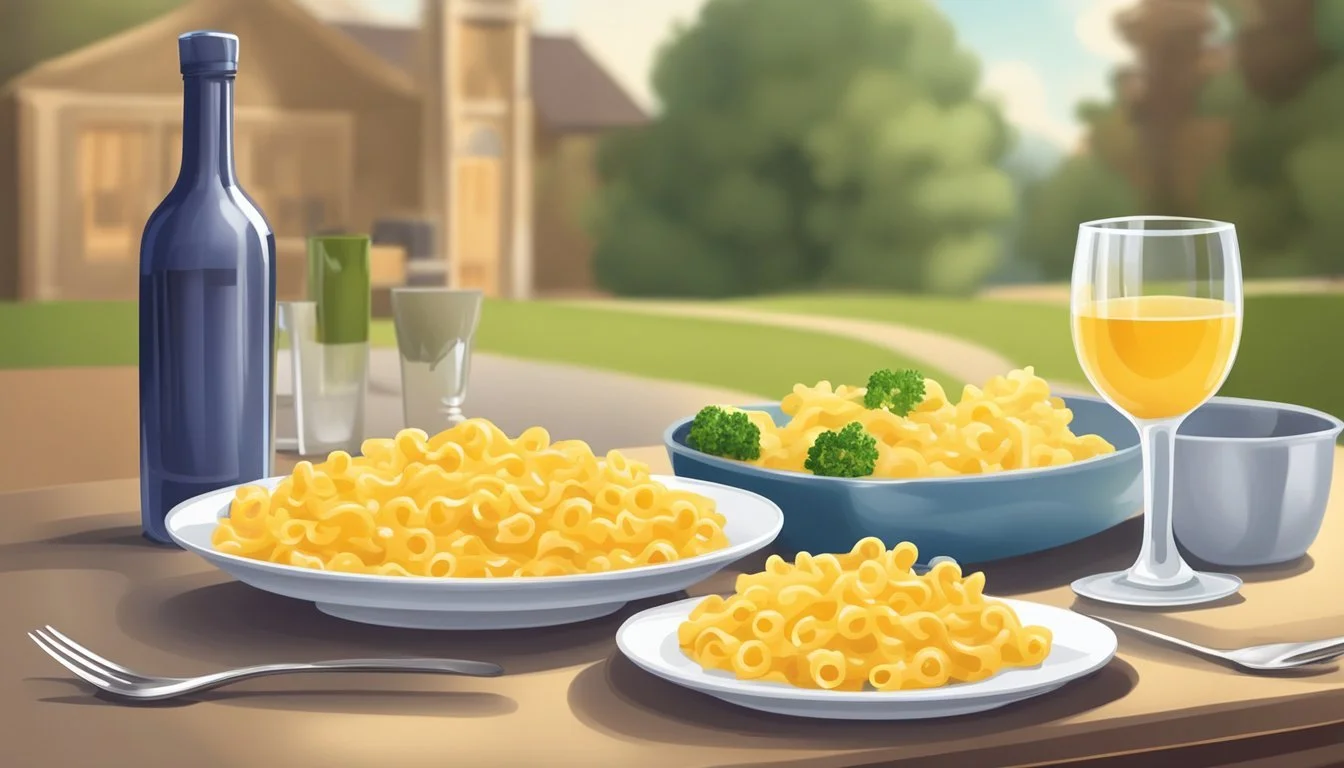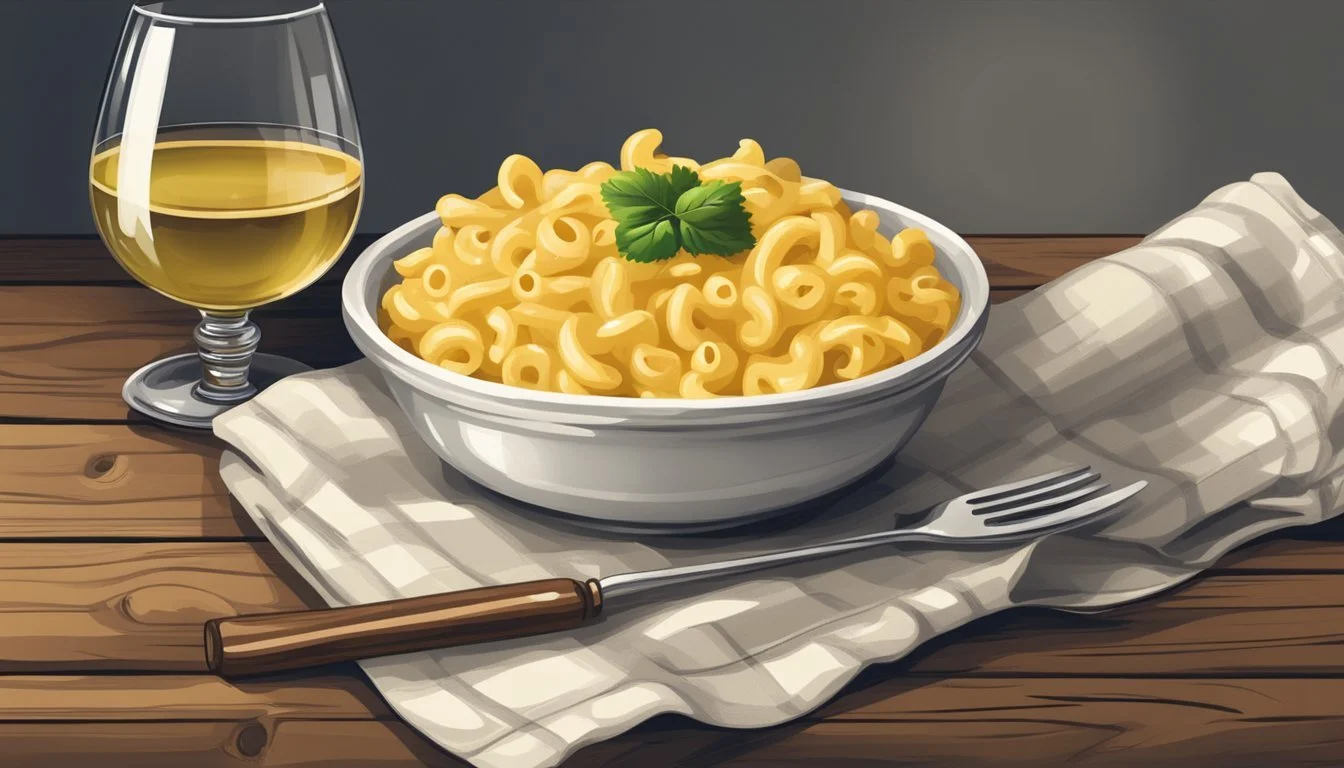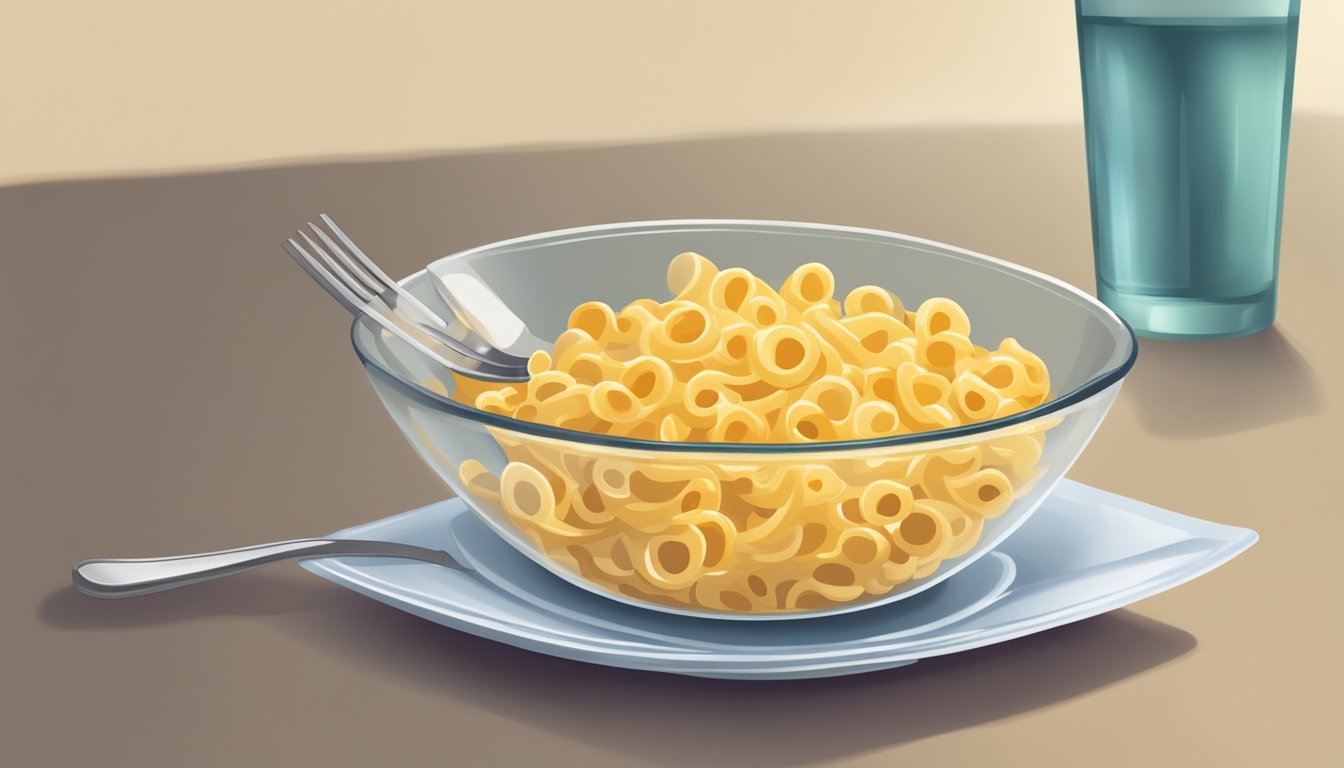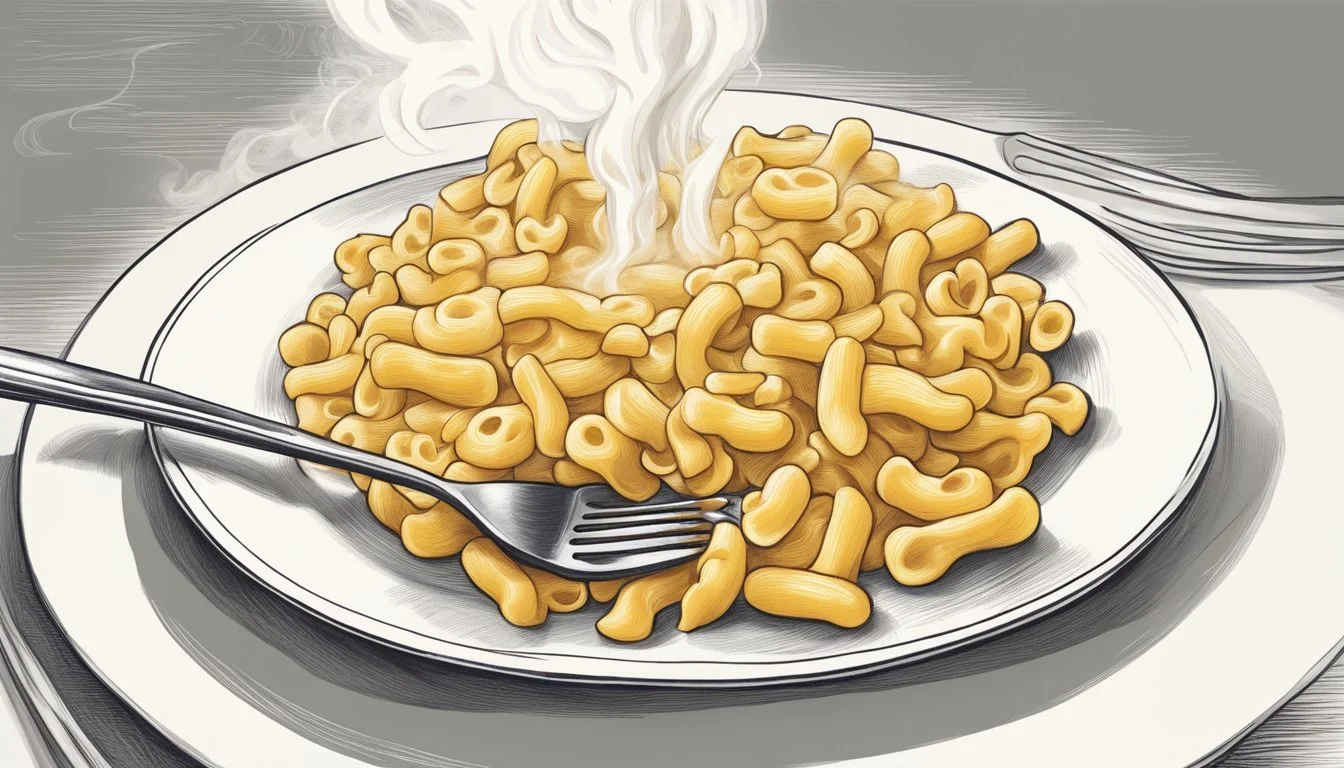How Do You Eat Macaroni and Cheese?
A Guide to Enjoying This Classic Comfort Food
Macaroni and cheese (how long does cheese last?) stands as a quintessential comfort food, beloved by many for its creamy, savory flavors and the simplicity with which it can be prepared. The dish's roots trace back centuries, yet it remains a staple in modern cuisine, appearing at family dinners, as a quick lunch option, and even as a gourmet variation in upscale restaurants. While mac and cheese (What wine goes well with cheese?) is widely enjoyed, there's ongoing debate over the "correct" way to eat this comforting dish, revealing the personal and cultural nuances that accompany its consumption.
Eating macaroni and cheese may seem straightforward, but preferences vary significantly. Some diners insist on using a fork to twirl and spear the elbow-shaped pasta, claiming that it provides the ideal bite sans excess cheese sauce. Meanwhile, others favor a spoon, which effortlessly scoops up both pasta and sauce, ensuring a harmonious blend of flavors in every mouthful. This divergence in utensil choice underscores the personal nature of how one enjoys macaroni and cheese.
Regardless of the utensil employed, the experience of eating macaroni and cheese is often a nostalgic and indulgent one. This simple dish, composed primarily of pasta and cheese—ingredients readily found in numerous households—evokes a sense of home and comfort for many. As with many comfort foods, macaroni and cheese's warm, gooey texture and rich taste offer more than mere sustenance; they provide a sensory return to simpler times and cherished memories.
Essential Ingredients
The success of mac and cheese hinges on the careful selection of its components, each lending its own character and depth to the dish.
Choosing the Right Pasta
Macaroni is the traditional choice, but any pasta with ridges or hollows is ideal for capturing the cheese sauce. Opt for pasta made from durum wheat semolina for a firm texture that holds up to the creamy sauce.
Selecting Cheeses
Varieties such as sharp cheddar for flavor, Gruyère for a nutty essence, and mozzarella for stretch are recommended. Some recipes also suggest a touch of Parmesan for a savory kick. It's important to use cheeses that melt well to ensure a smooth texture.
Cheese Type Purpose Suggested Quantity Cheddar Main flavor 2 cups, shredded Gruyère Nuttiness 1 cup, shredded Mozzarella Stretchiness 1 cup, shredded Parmesan Savory accent 1/4 cup, grated
Creating the Creamy Cheese Sauce
A roux formed of butter and flour creates the thick base for a creamy sauce, to which milk is added gradually. Once the roux is combined with milk and heated to the right consistency, the shredded cheese mix is melted in, giving rise to a rich and velvety cheese sauce.
Ingredient Role Suggested Quantity Butter Roux base 1/4 cup Flour Thickener 1/4 cup Milk Creaminess 2 cups
Enhancing Flavor with Seasonings
Small quantities of salt and black pepper provide foundational seasoning, while spices like mustard powder, cayenne, or nutmeg add depth. For a more nuanced flavor, consider sautéed garlic or onion, or a sprinkle of fresh herbs.
Seasoning Purpose Suggested Quantity Salt Foundation 1 tsp Black Pepper Balance 1/2 tsp Mustard Powder Depth 1/2 tsp Cayenne Heat Pinch Nutmeg Aromatic warmth Pinch
In crafting the perfect mac and cheese, each ingredient must be chosen with consideration for its contribution to the final symphony of flavors and textures.
Cooking Methods
Macaroni and cheese can be prepared in various ways, but two common methods are stovetop preparation and baking in an ovenproof dish, each yielding a distinct texture and flavor profile.
Stovetop Preparation
Stovetop macaroni and cheese is renowned for its creamy texture and quick cooking process. The key to this method is a smooth cheese sauce, typically made by melting butter in a saucepan and whisking in flour to create a roux. Gradually adding warmed milk to the roux, while stirring consistently, prevents lumps. Once the mixture is thick enough to coat a spoon, one integrates a blend of cheeses until melted and smooth. The cooked pasta is then stirred into the creamy cheese sauce, ensuring every macaroni is evenly coated.
Baking in an Ovenproof Dish
Baking macaroni and cheese transforms it into a comforting dish with a golden, crispy crust. To start, one follows the basic steps of the stovetop preparation for making the cheese sauce and mixing it with the pasta. The mac and cheese is then transferred to a buttered ovenproof dish. For added texture, breadcrumbs can be sprinkled on top. It's then baked until the cheese bubbles and the breadcrumbs form a satisfying crust. This method yields a contrast between the creamy interior and the crisp breadcrumb crust, providing a variety of textures in each bite.
Incorporating Variations
While macaroni and cheese is a beloved classic, incorporating a variety of ingredients can transform this staple dish into a remarkable gustatory experience. These customizations not only provide a change in flavor and texture but can also contribute additional nutritional value.
Adding Vegetables
For those looking to enhance their mac and cheese with a nutritional boost, adding vegetables is a commendable approach. Notable options include:
Broccoli: Small, steamed florets mixed into the cheese sauce add a satisfying crunch and a dose of vitamins.
Kale: Finely chopped and sautéed kale folds easily into the dish, offering a contrast in texture and a rich, earthy flavor.
Mushrooms: Sautéed mushrooms provide a meaty umami profile.
Leeks: Thinly sliced and gently sautéed leeks supplement a subtle, onion-like essence.
Butternut Squash: Roasted and pureed butternut squash introduces a natural sweetness and smoothness while enhancing the creaminess of the sauce.
Including Proteins
Incorporating proteins can elevate homemade mac and cheese into a hearty, one-dish meal:
Lobster: Lobster (What wine goes well with lobster?) chunks contribute a luxurious twist and a boost of protein to macaroni cheese.
Other proteins such as grilled chicken, pulled pork, or crispy bacon can be stirred in to satiate the appetite of those desiring a more robust dish.
Exploring Different Cheeses
Utilizing an assortment of cheeses can drastically modify the dish's flavor profile and texture:
Sharp Cheddar: Delivers a classic, pungent taste that is the backbone of many mac and cheese recipes.
Gruyere: Offers a creamy texture and a slightly sweet and nutty flavor.
Gouda: Can be added for a rich, buttery taste and a hint of caramel sweetness.
Goat Cheese: Introduces a distinct tang and creaminess to macaroni cheese.
Each variation in cheese selection can either complement or stand out against the other ingredients, depending on one's desired outcome.
Pairing with Sides
Macaroni and cheese shines as a comfort food staple, and while it can stand alone, the experience is often enhanced with the right side dishes. Thoughtful pairings add textural contrast and balance the richness of the dish.
Complementing with Salads
A green salad provides a crisp contrast to the creamy texture of mac and cheese. Opting for a kale salad mixed with vibrant ingredients like sliced radishes and a tangy vinaigrette can add both nutritional value and a punch of flavor. The bitterness of the greens is an excellent counterpoint to the heaviness of the cheese.
Kale Salad:
Greens: Fresh kale leaves, torn and massaged
Veggies: Add thinly sliced radishes and cucumbers
Dressing: A homemade lemon vinaigrette or a classic Italian dressing
Toppings: Toss in some pumpkin seeds or sunflower seeds for crunch
Accompanying with Bread
Pairing mac and cheese with a side of bread transforms the meal into a filling feast. A crusty baguette, sliced and lightly toasted, provides a simple and satisfying crunch. Another option is garlic swirl rolls; their aromatic flavor complements the cheese without overwhelming it.
Bread Options:
Baguette: Slice and serve toasted or fresh.
Garlic Swirl Rolls: Warm in the oven for a soft, aromatic accompaniment.
Serving and Eating
When serving and eating macaroni and cheese, the choice of utensil, portion size, and presentation contribute to an enjoyable meal experience with this classic comfort food.
Choosing the Right Utensil
The primary utensils for eating mac and cheese are a spoon or fork. A fork is typically used when the mac and cheese is served in a denser state, allowing one to easily pierce through pasta. A spoon might be chosen for creamier versions to scoop up the cheese sauce along with the noodles.
Appropriate Portions
Mac and cheese is rich in both flavor and calories. A standard serving size could be approximately one cup, which translates into significant amounts of fat and carbohydrates. Consulting nutrition information is advisable for those monitoring their intake.
Standard Serving Size: 1 cup
Nutrition Information: Varies based on the recipe
Presentation
Presentation enhances the eating experience. Serve mac and cheese in a colorful ovenproof dish that complements its warm, golden hue. Using an ovenproof dish allows the top to be broiled if a crispy cheese crust is desired, adding both texture and visual appeal to the dish.
Dish Color: Complementary to golden yellow
Texture: Optional crispy crust
Food Pairings
When considering what to serve with macaroni and cheese, it's important to recognize the rich, creamy texture of this beloved dish and select sides that will complement it without overshadowing its comforting flavor.
Complementary Foods
Vegetables:
Salads: A crisp Autumn crunch salad brings a refreshing contrast.
Roasted Veggies: Italian roasted vegetables add a healthy balance.
Coleslaw: A classic coleslaw with cabbage, carrots, vinegar, and poppy seeds pairs well.
Proteins:
Meatloaf: A classic side of meatloaf can provide hearty sustenance.
BBQ Ribs: BBQ baby back ribs introduce a sweet and smoky counterpoint.
Fried Chicken: Tandoori fried chicken adds a spicy twist.
Breads:
Garlic Swirl Rolls: Soft, savory rolls can absorb the creamy sauce.
Mac and Cheese in Other Dishes
Enhanced Entrees:
Tacos: One can integrate mac and cheese into tacos for a fun fusion of flavors, with a sprinkle of cayenne pepper for a little heat.
Pizza: A mac and cheese pizza is another creative endeavor for a double-carb delight.
Chili Mac:
Mac and cheese combined with chili is a hearty option that brings a robust flavor profile and added protein.
Desserts:
Although not typically paired, for those looking for a juxtaposition, a slice of brownie with ice cream can serve as a comforting dessert after a meal of mac and cheese.
Storage and Reheating
To maximize the quality of mac and cheese leftovers, knowing proper storage and reheating methods is essential. This section provides a concise overview of maintaining the integrity of this beloved dish when saving it for later enjoyment.
Keeping Leftovers
Storing mac and cheese effectively requires an airtight container. It's best to use glass containers as they can go from fridge to microwave without any hassle. To prolong the shelf life and maintain safety, leftovers should be refrigerated within two hours of cooking, as this helps prevent bacterial growth.
Containers: Glass with airtight lids
Timeframe: Refrigerate within 2 hours of preparation
Best Practices for Reheating
When reheating, one can maintain the creaminess of the mac and cheese by adding liquid. About 1 tablespoon of milk per cup of mac and cheese ensures it stays moist. For reheating, there are several methods, but ovens and microwaves are most common.
Oven Method:
Preheat oven to 350 degrees Fahrenheit.
Place mac and cheese in an ovenproof dish if it isn't already.
Stir in a little milk, cover with foil, and heat until warm.
Microwave Method:
Place mac and cheese in a microwave-safe dish.
Stir in milk, cover with a damp paper towel or microwave-safe plate.
Reheat on 50% power in 1-minute intervals, stirring each time to distribute heat evenly.
Sensory Experience
When one enjoys macaroni and cheese, they engage in a multi-sensory experience. The visual appeal and combination of textures and flavors are central to its reputation as a beloved comfort food.
Visual Appeal
Macaroni and cheese often presents a warm, golden hue that suggests a rich and inviting flavor profile. The consistent color throughout the dish serves as a visual cue, communicating to diners that it is creamy and well-blended. The individual macaroni noodles should be coated evenly, suggesting a smooth and appetizing experience.
Texture and Taste
The texture of mac and cheese plays a significant role in its appeal. High-quality macaroni and cheese features pasta that is cooked al dente, providing a satisfying firmness to each bite. The cheese sauce should be creamy and velvety, coating the pasta uniformly.
Regarding taste, the cheese employed imparts a flavor that can range from mild and buttery to sharp and tangy. This variety allows for an intriguing taste experience with every spoonful. The balance between the pasta and the cheese sauce ensures that neither the texture nor the flavor overwhelms the other, but instead, they work in harmony to create a comforting and indulgent dish.
Nutritional Information
When assessing the nutritional content of macaroni and cheese, it's crucial to consider the variability depending on ingredients and preparation methods. Typically, a one-cup serving of homemade macaroni and cheese contains significant calories and macronutrients, due to the inclusion of pasta, cheese, and oftentimes whole milk and butter.
Calories and Fats:
One cup of a standard homemade recipe might provide around 506 calories. This serving could contain 20 grams of fat, with 24 grams of saturated fat playing a considerable part due to the cheese and butter content.
Carbohydrates:
Macaroni and cheese is rich in refined carbohydrates, with a one-cup serving offering about 53 grams. Of these, a small portion comprises dietary fiber, often around 3 grams.
Protein:
A good source of protein, the same serving size might include approximately 20 grams of protein, largely from the cheese and milk.
Sodium:
The dish also tends to be high in sodium, with estimates around 837 mg per cup, a factor to consider for those monitoring their salt intake.
Below is a summarized table of the nutritional content for a one-cup serving:
Nutrient Amount Calories 506 kcal Total Fat 20 g Saturated Fat 24 g Carbohydrates 53 g Dietary Fiber 3 g Protein 20 g Sodium 837 mg
This information indicates that macaroni and cheese can be quite dense in both calories and nutrients, which emphasizes the importance of portion control and balance within an overall diet.
Dietary Considerations
When preparing or choosing macaroni and cheese, one can tailor the dish to meet specific dietary needs or restrictions. Attention to the choice of ingredients ensures that individuals with sensitivities or dietary preferences can still enjoy this classic comfort food.
Gluten-Free Options
Those with gluten intolerance or celiac disease can opt for gluten-free mac and cheese by using macaroni made from rice, corn, or quinoa. It's important to read labels carefully as some gluten-free pasta may have different cooking times or textures. Additionally, thickeners or flour used in the cheese sauce should be replaced with gluten-free alternatives like cornstarch or a gluten-free flour blend.
Gluten-free pasta options:
Rice pasta
Quinoa pasta
Corn pasta
Gluten-free thickener options for sauce:
Cornstarch
Gluten-free flour blends
Lactose-Free Variants
For those avoiding lactose, lactose-free milk and cheese substitutes are available to create a lactose-free mac and cheese. One must ensure that all dairy ingredients, including butter, are replaced with lactose-free or non-dairy counterparts. Nutritional yeast or lactose-free cheeses offer that necessary cheesy flavor without the lactose.
Lactose-free dairy substitutes:
Lactose-free milk
Lactose-free cheese
Dairy-free butter replacements
Flavor enhancers:
Nutritional yeast (for a cheesy flavor)
Mustard powder or paprika (for additional flavor profiles)
Using these substitutions allows those with dietary restrictions to enjoy homemade mac and cheese without compromising on taste or personal dietary guidelines.
Demographic Preferences
Preferences in macaroni and cheese consumption often vary by age, with children and adults having their distinct favorite recipes and ways of enjoying this comfort food. Surveys reflect these trends, highlighting how demographic groups approach eating macaroni and cheese.
Children's Favorite Recipes
Children typically gravitate towards creamy and simple versions of mac and cheese. Preferences often include mild cheeses and a smooth texture, with recipes that use cheddar being particularly favored. Creative presentations, such as macaroni cheese in fun shapes, also tend to be more appealing to the younger demographic.
Trends Among Adults
Adults show more diversity in their macaroni and cheese consumption. A survey mentioned in The Kitchn indicates that the majority prefer using a fork over a spoon. Many adults also explore gourmet variations, integrating ingredients like truffles (What wine goes well with truffles?), lobster, or artisanal cheeses. Restaurants have adapted to these trends, with many offering unique and sophisticated versions of mac and cheese on their menus.


